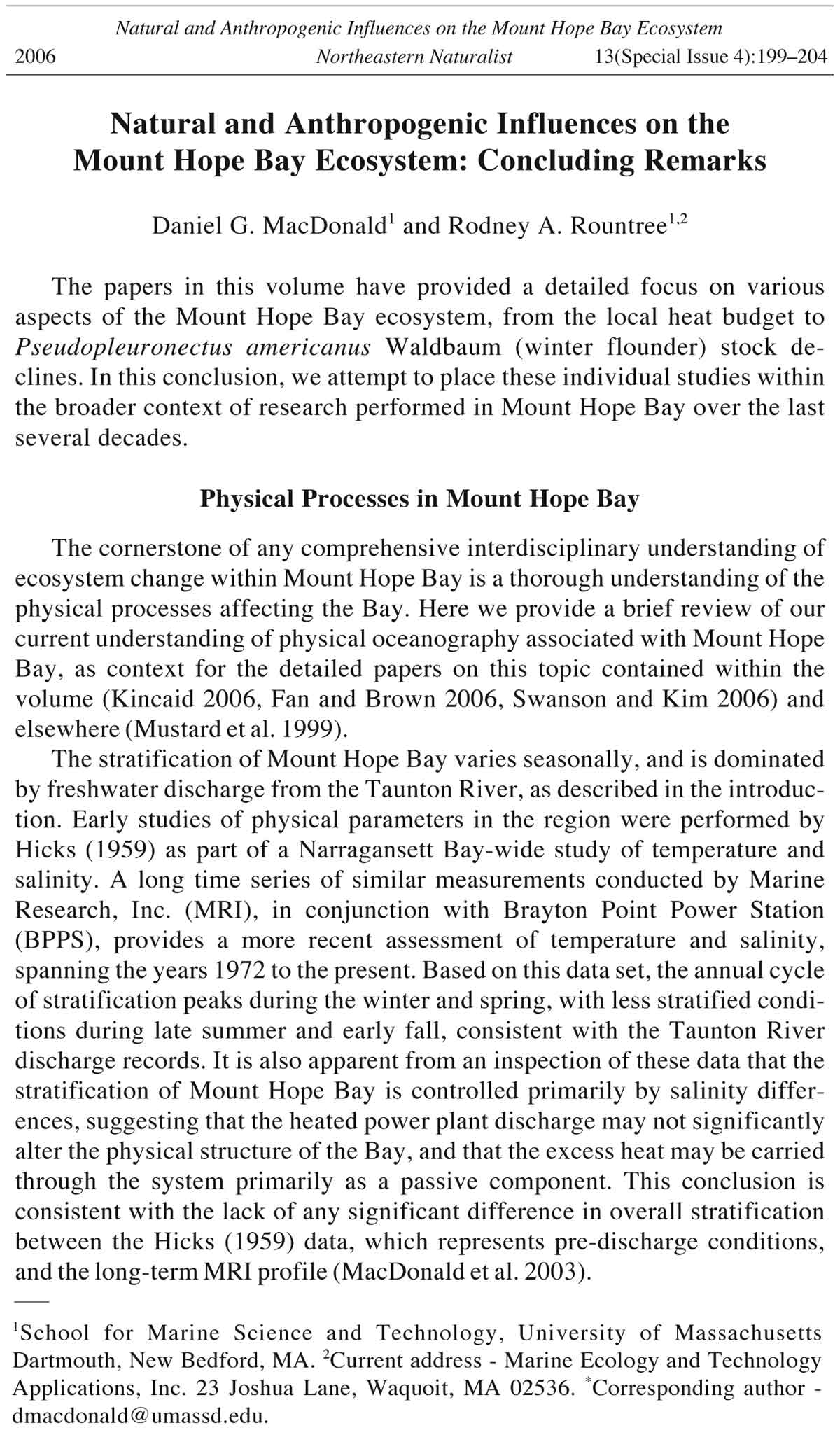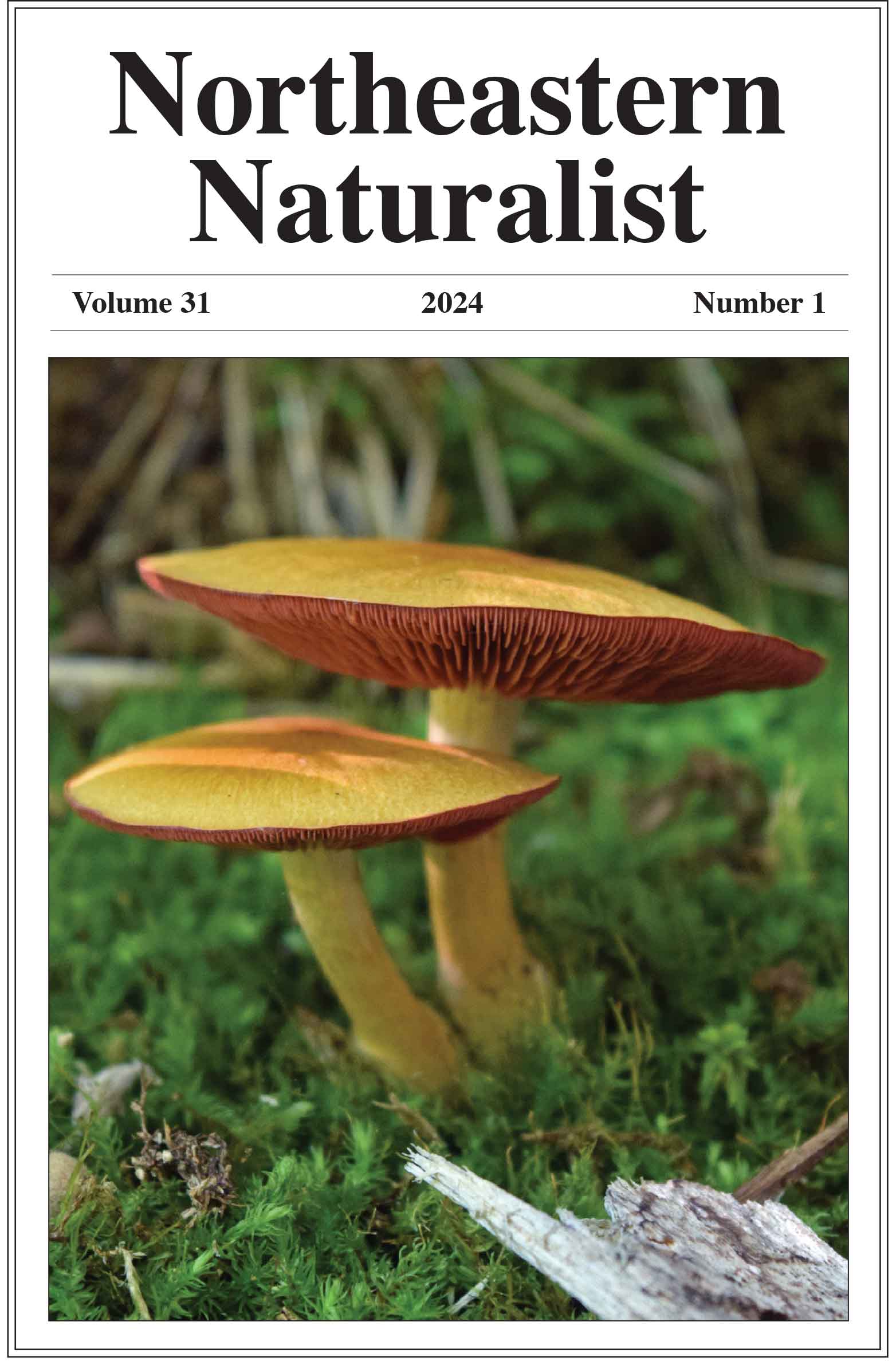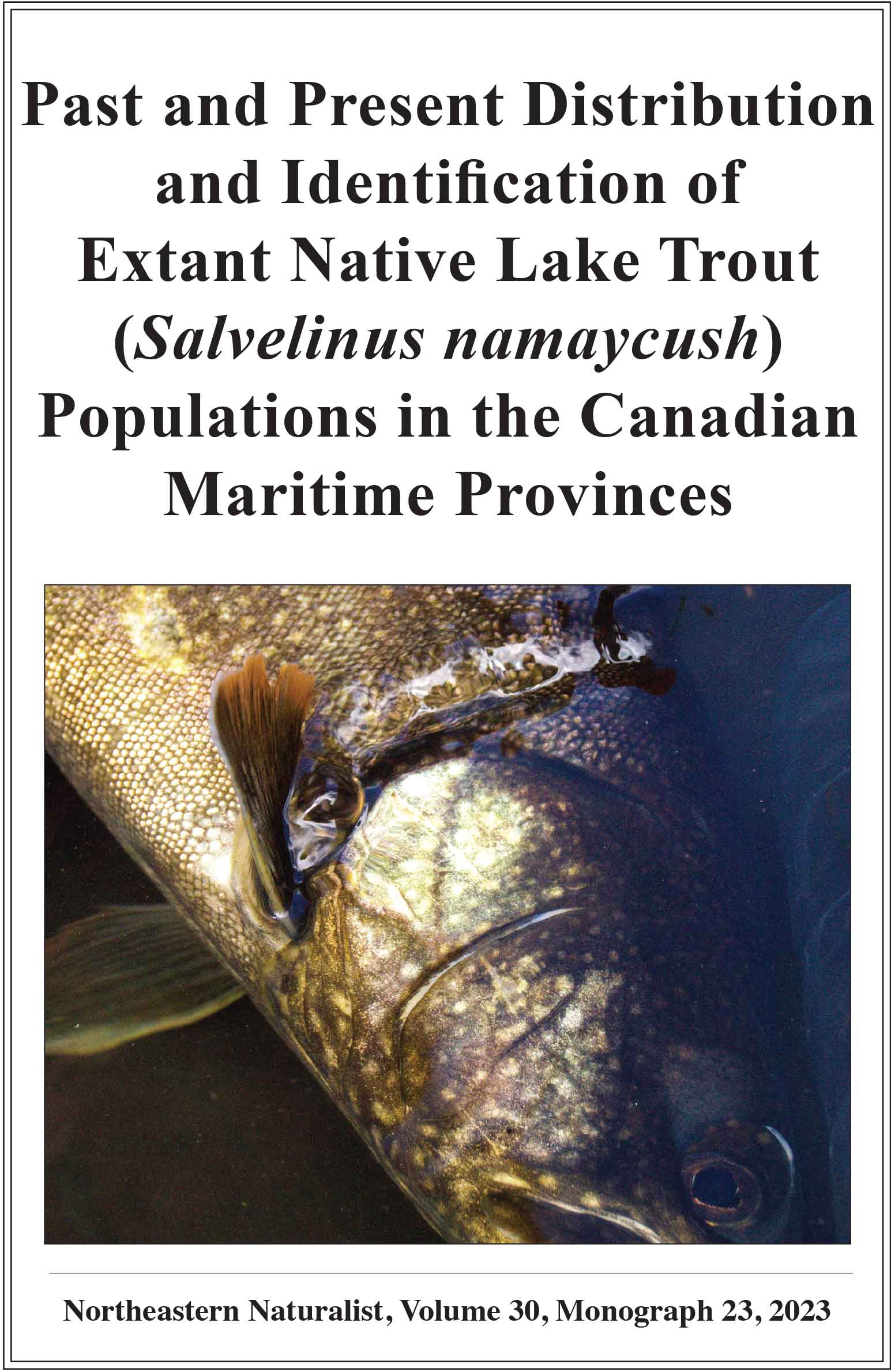Natural and Anthropogenic Influences on the Mount Hope Bay Ecosystem
2006 Northeastern Naturalist 13(Special Issue 4):199–204
Natural and Anthropogenic Influences on the
Mount Hope Bay Ecosystem: Concluding Remarks
Daniel G. MacDonald1 and Rodney A. Rountree1,2
The papers in this volume have provided a detailed focus on various
aspects of the Mount Hope Bay ecosystem, from the local heat budget to
Pseudopleuronectus americanus Waldbaum (winter flounder) stock declines.
In this conclusion, we attempt to place these individual studies within
the broader context of research performed in Mount Hope Bay over the last
several decades.
Physical Processes in Mount Hope Bay
The cornerstone of any comprehensive interdisciplinary understanding of
ecosystem change within Mount Hope Bay is a thorough understanding of the
physical processes affecting the Bay. Here we provide a brief review of our
current understanding of physical oceanography associated with Mount Hope
Bay, as context for the detailed papers on this topic contained within the
volume (Kincaid 2006, Fan and Brown 2006, Swanson and Kim 2006) and
elsewhere (Mustard et al. 1999).
The stratification of Mount Hope Bay varies seasonally, and is dominated
by freshwater discharge from the Taunton River, as described in the introduction.
Early studies of physical parameters in the region were performed by
Hicks (1959) as part of a Narragansett Bay-wide study of temperature and
salinity. A long time series of similar measurements conducted by Marine
Research, Inc. (MRI), in conjunction with Brayton Point Power Station
(BPPS), provides a more recent assessment of temperature and salinity,
spanning the years 1972 to the present. Based on this data set, the annual cycle
of stratification peaks during the winter and spring, with less stratified conditions
during late summer and early fall, consistent with the Taunton River
discharge records. It is also apparent from an inspection of these data that the
stratification of Mount Hope Bay is controlled primarily by salinity differences,
suggesting that the heated power plant discharge may not significantly
alter the physical structure of the Bay, and that the excess heat may be carried
through the system primarily as a passive component. This conclusion is
consistent with the lack of any significant difference in overall stratification
between the Hicks (1959) data, which represents pre-discharge conditions,
and the long-term MRI profile (MacDonald et al. 2003).
1School for Marine Science and Technology, University of Massachusetts
Dartmouth, New Bedford, MA. 2Current address - Marine Ecology and Technology
Applications, Inc. 23 Joshua Lane, Waquoit, MA 02536. *Corresponding author -
dmacdonald@umassd.edu.
200 Northeastern Naturalist Vol. 13, Special Issue 4
The persistence of salinity driven stratification throughout the Bay at all
times of the year sets up some interesting issues with respect to the heated
water discharge. The intake for the Brayton Point cooling water is located at
approximately a 6-m depth, implying that denser bottom water is drawn into
the plant. This water is then heated within the plant and ultimately discharged
to the surface. The MRI observations suggest that salinity controls
stratification in the water column, which would indicate that the discharged
water should sink to somewhere near its original depth of 6 m, despite its
additional heat load. Although data from several deployments of thermistor
chains in the vicinity of Brayton Point by Applied Science Associates, Inc.
(ASA) indicate that the discharge plume sometimes sinks during winter, the
plume is confined to the upper portion of the water column most of the time
(USGEN 2001). This suggests rapid mixing of the discharge with surrounding
surface waters. The fate of the excess heat produced by the Brayton Point
discharge across the Bay as a whole was the focus of the heat budget study
discussed by Fan and Brown (2006) earlier in this volume.
Few studies have directly addressed circulation patterns within the Bay
through observations. Several current meters were deployed by Spaulding
and White (1990) near the mouth of the Taunton River, the entrance of the
Sakonnet River, and the narrows connecting Mount Hope Bay to the East
Passage. This study indicated that currents in the Bay are primarily driven by
tidal motion, with little influence from the wind, and that tidal currents are
generally stronger between Mount Hope Bay and East Passage than in the
Sakonnet River. Evidence of net estuarine flow was observed in the study
near the mouth of the Taunton River. More recent and detailed observations,
performed by Kincaid and discussed earlier in this volume, in the Sakonnet
River and East Passage entrances, as well as the Taunton River, have added
much needed detail to the original studies. Rounding out the physical contributions
to this volume, Swanson et al. (2006) have presented a detailed
numerical modeling study describing the physics and circulation of the Bay.
This paper complements the observational work well, and provides a more
detailed framework for further assessment of the local heat budget.
Recent Ecosystem Changes in Mount Hope Bay
Much attention has been focused recently on the declining stocks of winter
flounder in Mount Hope Bay (e.g., Gibson 1996, Rountree et al. 2003).
Although National Marine Fisheries Service (NMFS) records of commercial
and recreational landings of winter flounder in the Rhode Island region over the
last half century show several periods of stock building and decline, the most
recent and most severe has occurred over the last 15 to 20 years. This trend is
supported by many other data sets in recent years, including trawl data
collected by the Rhode Island Department of Fish and Wildlife (RIDFW) and
MRI. The timing of the beginning of this decline coincides with an increase in
discharge volume and total heat output from BPPS, causing Gibson (1996,
1998, 2000a, 2000b) to claim a cause-and-effect relationship between these
2006 D.G. MacDonald and R.A. Rountree 201
two events. However, a review of data from various sources presented in this
volume weakens this claim. Although analysis by Delong and Collie
(symposium presentation, and Collie and Delong 2001) provide strong evidence
for some impact of the Brayton Point Power Plant on winter flounder
stocks in Mount Hope Bay, other studies provide equally strong contradictory
analysis (DeAlteris et al. 2006, Englert et al. 2006, O’Neill et al. 2006,
Rountree and Witting symposium presentation). As pointed out by Cichetti
(2006) in his summary of discussion at the symposium, there is no clear
scientific consensus on this issue, and it represents the most significant issue in
the controversy surrounding BPPS.
Several studies examined evidence for changes in natural mortality of
winter flounder and other fishes due to changes in predator abundances and/
or behavior. As predator populations are affected through various environmental
and management mechanisms, these changes can be passed on to
prey populations, such as winter flounder. An example is the local cormorant
Phalacrocoraz auritus Lesson population, which has increased exponentially
over the last few decades. Because cormorants prey directly on winter
flounder and other fish species, the large increases in its population may
have caused increased natural mortality for some fishes in Mount Hope Bay
as suggested by McCay and Rowe (symposium presentation). The shrimp
Crangon septemspinosa Say is also a major predator of winter flounder,
directly affecting winter flounder eggs, as described by Taylor's symposium
presentation. An interesting dynamic of shrimp predation is its interaction
with temperature, where increasing water temperatures brought on by climate
change and/or thermal effluent results in dramatic increases in the
mortality of winter flounder eggs and larvae due to shrimp predation.
Webb's presentation commented on the potential impact of the increasing
seal population on winter flounder stocks.
Many other significant changes have also occurred within the Mount
Hope Bay ecosystem during the same time frame. Zostera marina L. (eelgrass)
beds, once prevalent throughout the Narragansett Bay region were
decimated by a fungal blight in the 1930s, which may have reduced its
presence by up to 90% (Short et al. 1996). Further declines of this important
fish habitat during the last several decades, presumably due to nutrient
loading (Short et al. 1996), have resulted in the complete loss of eelgrass
from Mount Hope Bay (Rines 1999, cited in USGEN 2001).
The potential importance of increased nutrient loading on the Mount
Hope Bay ecosystem was frequently discussed at the symposium. Although,
unfortunately, there is little direct measurement data on nutrient loading in
the Bay, several studies did point to indirect evidence of nutrient loading
effects (Deacutis et al. 2006; Howes and Schlezinger, and Rountree and
Witting symposium presentations). Increased nutrient loading from point
and nonpoint sources throughout the watershed can contribute to low dissolved
oxygen in bottom waters as shown in presentations by Howes and
Schlezinger as well as Deacutis et al. Both of these talks described data sets
202 Northeastern Naturalist Vol. 13, Special Issue 4
identifying periods of critically low dissolved oxygen in bottom waters, a
condition that can lead to severe effects for local biological populations. As
mentioned in the introduction, Rountree and Witting's presentation suggested
that the observed shift in Mount Hope Bay fish assemblages from
benthic to pelagic species is often a symptom of eutrophication effects due to
increased nutrient loading.
The phytoplankton and zooplankton communities have also undergone
recent changes, although a significant gap in the collection of plankton
data between 1986 and 1996 has prevented detailed analyses (Rountree et
al. 2003). Analysis of samples collected in Mount Hope Bay for one year in
1997 and 1998 suggest an increase in winter dinoflagellates and winter
zooplankton, as compared to mean data from the period 1972 through
1985. These changes were coupled with a decrease in chlorophyll by a
factor of 2 to 4, and an increase in ammonia by a factor of 2 (MRI 1999). A
mooring deployed in Mount Hope Bay south of Spar Island by the School
for Marine Science and Technology (SMAST) at the University of Massachusetts
Dartmouth during the summer of 2001 indicates that summertime
stratification and nutrient loading was sufficient to contribute to periods of
critically low dissolved oxygen concentrations in bottom water (Rountree
et al. 2003). A more comprehensive survey of dissolved oxygen throughout
the upper portion of Narragansett Bay, including Mount Hope Bay, was
presented in the paper by Deacutis et al. (2006). The potential for certain
regions of the Bay to become hypoxic can sometimes be enhanced directly
through the presence of various physical man-made structures, such as
culverts, dams, and bridge crossings, that can alter the natural tidal flow of
the system. In the final paper in this volume, Barrett et al. (2006) documented
recent efforts to produce an atlas of these tidal restrictions, which
can be of use to local municipalities and regulators as they develop management
plans for the future.
Regional warming trends have also been at work in Narragansett Bay and
Mount Hope Bay. Between 1960 and 1990, the average wintertime water
temperature in Narragansett Bay increased by nearly 3 °C (Walker 2001). This
is set within the context of a 1.8 °C average wintertime increase for terrestrial
temperatures across New England and upstate New York between 1895 and
1999 (Keim and Rock 2001). Clearly, the local ecosystem within Mount Hope
Bay is affected by both natural and anthropogenic changes occurring at many
different scales. This brief assessment of ecosystem changes in Mount Hope
Bay is by no means comprehensive, but is included here to provide context
with respect to the wide range of papers contained within this volume.
Conclusion
Collectively, the papers presented at the symposium and the resulting
papers published in this volume provide the state of the art in terms of what
is known about the Mount Hope Bay ecosystem, and can begin to provide a
framework for unraveling the complex web of natural and anthropogenic
2006 D.G. MacDonald and R.A. Rountree 203
interactions responsible for the issues we observe today, not only in Mount
Hope Bay, but in other regions as well. Mount Hope Bay represents a
complex ecosystem that has been impacted by over 200 years of human
activity in the region. The symposium and resulting proceedings demonstrate
the need for regional academic institutions, resource managers, conservation
groups, and resource users to work together to study Mount Hope
Bay from an ecosystem perspective in order to resolve the controversial
issues surrounding the Bay and to develop workable management plans for
the system in the future. In addition, it is clear that Mount Hope Bay’s
ecosystem cannot be studied in isolation from the greater Narragansett Bay
system. Significant exchange of water between Mount Hope Bay and
Narragansett Bay strongly influence local water quality. The degree of
isolation of fish populations between Mount Hope Bay and Narragansett
Bay must be determined before proper assessment of Mount Hope Bay fish
stocks can be made. Mount Hope Bay can be viewed as a natural laboratory
where regional scientists and managers are attempting to determine the
relative contributions of natural and anthropogenic, local and regional, influences
on an estuarine ecosystem. We believe that the lessons learned, and
questions, both asked and unanswered, in this “laboratory” are applicable to
many estuaries around the world.
Literature Cited
Barrett, S.B., B.C. Graves, and B. Blumeris. 2006. The Mount Hope Bay tidal
restriction atlas: Identifying man-made structures which potentially degrade
coastal habitats in Mount Hope Bay, Massachusetts. Northeastern Naturalist
13(Special Issue 4):
Cicchetti, G. 2006. Fisheries in Mount Hope Bay: Notes on a special symposium
from an invited regulatory perspective. Northeastern Naturalist 13(Special Issue
4):27–30.
Deacutis, C.F., D. Murray, W. Prell, S. Saarman, and L. Korhun. 2006. Hypoxia in
the upper half of Narragansett Bay, RI, during August 2001 and 2002. Northeastern
Naturalist 13(Special Issue 4):31–46.
DeAlteris, J.T., T.L. Englert, and J.A.D. Burnett. 2006. Trends in fish abundance in
Mount Hope Bay: Is the Brayton Point Power Station affecting fish stocks?
Northeastern Naturalist 13(Special Issue 4):95–116.
Fan, Y., and W.S. Brown. 2006. On the heat budget for Mount Hope Bay. Northeastern
Naturalist 13(Special Issue 4):47–70.
Gibson, M.R. 1996. Comparison of trends in the finfish assemblage of Mount Hope
Bay and Narragansett Bay in relation to operations at the New England Power
Brayton Point Station. RI Division Fish and Wildlife, Wickford, RI. Research
Reference Document 1995/1.
Hicks, S.D. 1959. The physical oceanography of Narragansett Bay. Limnology and
Oceanography 4:316-327.
Keim, B. and B. Rock, 2001. The New England region’s changing climate. Pp. 8-17,
In Preparing for a Changing Climate: The New England Regional Assessment
Overview. New England Regional Assessment Group, US Global Change Research
Program, University of New Hampshire, Durham, NH.
204 Northeastern Naturalist Vol. 13, Special Issue 4
Kincaid, C. 2006. The Exchange of water through multiple entrances to the Mount
Hope Bay estuary. Northeastern Naturalist 13(Special Issue 4):117–149.
MacDonald, D.G., L. Zhao, W.S. Brown, C. Chen, and L. Goodman, 2003. The Mount
Hope Bay Natural Laboratory: Unraveling the physics of a highly impacted
ecosystem. Poster presentation at the 2003 Mid-Atlantic Bight Physical Oceanography
and Meteorology (MABPOM) Meeting, Fall River, MA, October 16–17, 2003.
MRI (Marine Research, Inc.). 1999. Comparisons of benthic, phytoplankton, zooplankton
populations, nutrient, chlorophyll concentrations, and productivity values
between 1972–1985 and 1997/1998. Supplement A, Annual Report.
Falmouth, MA.
O'Neill, R.J., T.L. Englert, and J.K. Ko. 2006. Effects of Brayton Point Station's
thermal discharge on Mount Hope Bay winer flounder. Northeastern Naturalist
13(Special Issue 4):71–94.
Rines, H.M. 1999. Mapping temperature distributions in Mount Hope Bay–Fall 1998
deployment. Supplement C, 1998 Annual Report. Applied Sciences Associates,
Inc., Narragansett, RI. ASA Project 96-076.
Rountree, R., D. Borkman, W. Brown, Y. Fan, L. Goodman, B. Howes, B.
Rothschild, M. Sundermeyer, and J. Turner. 2003. Framework for Formulating
the Mount Hope Bay Natural Laboratory: A Synthesis and Summary. School for
Marine Science and Technology Technical Report Number SMAST-03-0501,
University of Massachusetts Dartmouth, New Bedford, MA. Available at: http://
www.smast.umassd.edu/MHBNL/report2003.php.
Short, F., D. Burdick, S. Granger, and S. Nixon. 1996. Long-term decline in eelgrass,
Zostera marina L., linked to increased housing development. Pp. 291–298, In
Kuo, J., R. Phillips, D. Walker, and H. Kirkman (Eds.). Proceedings of an
International Workshop, Rottnest Island, W. Australia. Jan. 25–29, 1996.
Spaulding, M.L., and F.M. White. 1990. Circulation dynamics in Mount Hope Bay
and the lower Taunton River [Rhode Island, USA]. Pp. 494–510, In R.T. Cheng
(Ed.). Residual Currents and Long-Term Transport. Coastal and Estuarine Studies
Vol. 38. Springer-Verlag, New York, NY.
Swanson, C., H.-Y. Kim, and S. Sankaranarayanan. 2006. Modeling of temperature
distributions in Mount Hope Bay due to thermal discharges from the Brayton
Point Station. Northeastern Naturalist 13(Special Issue 4):145–172.
USGen New England, Inc. (USGen). 2001. Variance request application and partial
demonstration under the Clean Water Act, section 316(a) and (b) in support of
renewal of NPDES permit No. MA0003654 for USGen New England, Inc.’s
Brayton Point Station, May 24. Somerset, MA.
Walker, H., 2001. Climate variability and winter flounder abundance in southern
New England. Pp. 66–67, In Preparing for a Changing Climate: The New England
Regional Assessment Overview. New England Regional Assessment
Group, US Global Change Research Program, University of New Hampshire,
Durham, NH.













 The Northeastern Naturalist is a peer-reviewed journal that covers all aspects of natural history within northeastern North America. We welcome research articles, summary review papers, and observational notes.
The Northeastern Naturalist is a peer-reviewed journal that covers all aspects of natural history within northeastern North America. We welcome research articles, summary review papers, and observational notes.